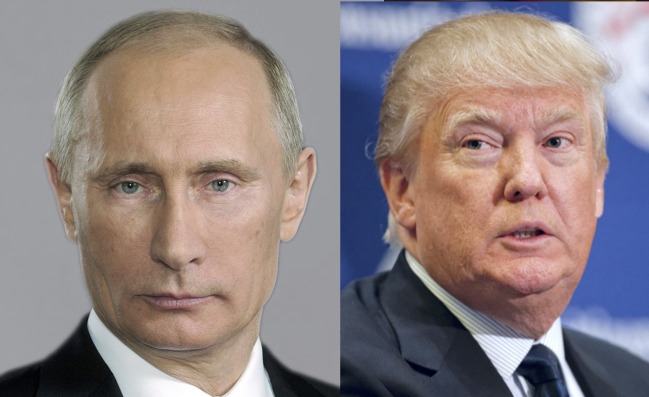The missing piece of the Trump-Russia election rigging conspiracy

Michael Wolff’s new insider book confirms that no one involved with the Donald Trump campaign – not Trump himself, not his family, not even Russian puppet Michael Flynn – thought that Trump had any chance of actually winning. In fact they were all banking on a loss. Yet they conspired with Russia to try to rig the election in Trump’s favor. That means they concluded that even the rigging wasn’t enough to put him over of the top. So what are we missing? How the heck did he end up winning after all?
According to the book, Donald Trump was so sure he’d lose, he even reassured Melania by telling her as much. Trump could only have come to this conclusion if his top advisers told him he had no chance of winning, and said it in such pessimistic fashion that even the delusional Trump managed to take the hint. These advisers must have looked at the impact the Russian rigging was having, looked at their own internal data, and seen that they couldn’t come close enough to have any chance.
Trump’s own campaign people were largely sycophantic bumblers, but they would have had access to the much more professional internal polling and analysis of the Republican National Committee. They must have been told by the RNC that they had no chance of winning. The bottom line is Trump’s people knew they’d lose, just as surely as we all knew Trump would lose. Flynn even told colleagues he wasn’t worried about getting caught taking Russian money, because it would only be a problem if they won. So again, what’s the missing piece of the puzzle here that explains how Trump won? Two distinct possibilities come to mind.
The first is that no one saw FBI Director James Comey’s last minute letter about Hillary Clinton coming. Comey misled the public into believing she was suddenly under criminal investigation for her emails when she was not. Polling analysis from FiveThirtyEight suggests that it was enough to put Trump over the top. The second is that perhaps the Russian government rigged this election more thoroughly than it let on to the Trump campaign.
With each new revelation that yet another bumbler in the Donald Trump campaign tried to reach out to Russia in the hope of conspiring to rig the election, the general trend has been that Russia brushed them off. Yet we know that Russia did rig the election for Trump through fake news, online targeting, stolen voter data, and other methods. It was as if the Russians were saying to the Trump’s bumblers, “Stop making it so obvious with all of these clumsy contacts, just sit back and let us do this for you.”
What if Russia rigged the election in additional ways? As Palmer Report has been documenting since the day after the election, the vote totals in key swing states don’t even read like naturally occurring numbers. Forget the long odds of Trump winning those states; it’s how he won those states that stands out as suspicious. Based on early voting numbers alone, it should have been impossible for Trump to win Florida. Based on demographics alone, it should have been impossible for Trump to win Michigan. Trump outperformed the polls in Wisconsin districts that used electronic voting machines, but didn’t outperform in Wisconsin districts that used paper ballots.
So let’s say Donald Trump didn’t actually win those states. If Russian hackers were able to get into voter registration databases, then its not a stretch to think they may have gotten into electronic voting machines and changed actual vote totals. Considering what a bunch of gossipy bumblers Trump’s people had already proven themselves to be, Russia probably wouldn’t even had told them at the end that it was going to hack the voting totals. So was it Russia, or was it simply Comey’s letter? After Trump’s own people figured out they were going to lose despite all the rigging up to that point, how did he end up winning? The answer is the final piece of the puzzle in all of this.
